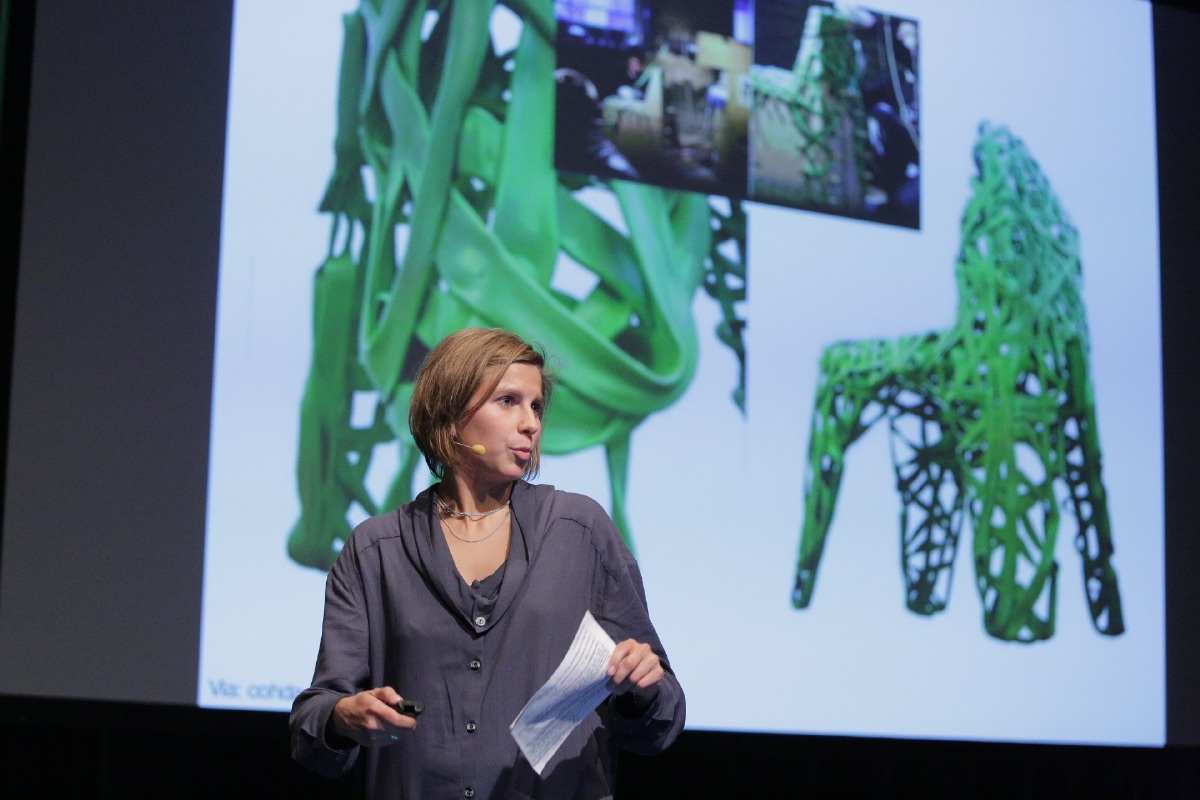- Good design uses the right material. Follow the charge of Cradle to Cradle and focus on upcycling instead of downcycling.
- Good design is not being moved around. Design products to be transported sustainably.
- Good design multi-functions. Packaging doesn’t have to be thrown away, can be integrated into product.
- Good design consumes less. If energy is saved in the manufacturing process, it shouldn’t be negated by the energy the product uses after.
- Good design is shareable. Libraries are a timeless example of the co-op method, why not apply this to other products?
- Good design communicates well. Think of what the consumer wants to know. For example, electricity meters that show you how much you’re saving in money are more effective than other data the user may not know how to interpret.
Illustrating her talk with beautiful infographics on somber statistics, Petz repeatedly emphasized another role designers play in solving the world’s problems:
“We need good graphic designers to take this information that is kind of boring in a scientific document and make people go ‘ooh’ and pay attention,” she said.























